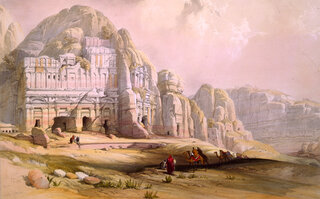Lithography
|
|
Lithography, a printmaking technique that revolutionized the world of art, stands out for its unique method of using a flat surface to create images. This article delves into the historical evolution of lithography, its process, and its impact on the art world
| Contents [hide] |
Introduction to Lithography
Lithography, from the Greek words for "stone" and "to write," was invented in 1796 by German author and actor Alois Senefelder as a cheap method of publishing theatrical works. This technique is based on the principle that oil and water do not mix and has been pivotal in the democratization of art.
The Invention and Early Years
Alois Senefelder discovered lithography almost by accident while looking for a cost-effective way to publish his scripts. He realized that he could use a greasy crayon to draw onto limestone and then use that stone to print multiple copies of the drawing. The original process involved drawing on limestone with oil, fat, or wax, then applying a mixture of water and acid. The treated stone was inked, but only the original drawing would hold the ink, allowing for the creation of prints. The Process of Lithography
The fundamental process of lithography involves drawing on a flat stone (lithographic limestone) or metal plate with a greasy substance. The artist then chemically treats the surface to ensure that the ink will adhere only to the drawing. After wetting the stone with water, which is repelled by the greasy ink but holds onto the non-image areas, the artist rolls ink onto the stone. The ink sticks only to the original drawing and is then transferred to a sheet of paper, producing a printed image. Technological Advancements
Lithography saw significant advancements in the 19th century. The invention of the lithographic rotary printing press by Richard March Hoe in 1843 allowed for high-volume printing, making lithography the primary method for mass production of posters, maps, books, newspapers, and packaging.
Lithography in the Art World
Artists began exploring lithography as a medium for artistic expression in the early 19th century. It was favored for its ability to produce soft, subtle shades, making it ideal for reproducing the effect of drawings. Famous artists like Francisco Goya and later, Henri de Toulouse-Lautrec, used lithography to great effect, creating art that was accessible to a broader audience.
The Golden Age of Lithography
The late 19th and early 20th centuries are often considered the golden age of lithography, especially in the context of advertising and poster art. The technique allowed for the creation of vibrant, colorful posters and became synonymous with the Art Nouveau movement. Artists like Alphonse Mucha and Jules Chéret elevated the status of the lithographic poster to a form of high art.
Lithography in the Modern Era
In the 20th century, with the rise of digital printing techniques, traditional lithography's popularity waned. However, it remains a valued technique among fine artists and printmakers for its unique qualities and the tactile nature of the process. Modern lithographers still use variations of Senefelder's original process to create distinct and nuanced works of art.
Conclusion
Lithography has played a vital role in both the arts and the commercial world. Its invention not only made print more accessible but also opened new avenues for artistic expression. While modern technology has introduced more efficient printing methods, the charm and uniqueness of lithography continue to fascinate artists and collectors alike.
Lithography as an Artistic Medium
During the first twenty-five years of the nineteenth century, the practice of lithography was predominantly restricted to cheap reproductions of paintings and drawings. However, around 1825 the French artists Ingres, Géricault, and Delacroix embraced the process as a way to avoid the problems inherent in wood-block and copper engraving, namely, the near necessity of middlemen like draughtsmen (who transferred the image to the wood or copper plate) and engravers (who carved the image out of the plate). The advantage to lithography (for an artist's point of view) was that he or she could draw or paint directly onto the lithographic material and avoid entirely the intermediate steps and craftsmen involved in engraving. Therefore, an artist's drawing and a lithographic print made from it were nearly identical — no reworking or transfer to another medium was necessary. It also afforded, at the time, the most complete range of line color from white to black.
Goya's lithographs 'The Bulls of Bordeaux' (1928) and Delacroix's illustrations to Goethe's Faust were the groundbreaking "artist's lithographs" that sparked a flood of (mostly French) artists who dabbled in lithography, including Prud'hon, Cezanne, Manet, and, of course, its greatest practitioner, Daumier, whose prints began to appear in the 1830s.
For the first time in history, an artist was able to send out into the world his or her own drawing, not in unique specimen but in editions. Each impression had all their personality, skill, and genius, with no recourse to intermediary persons and technological steps.

